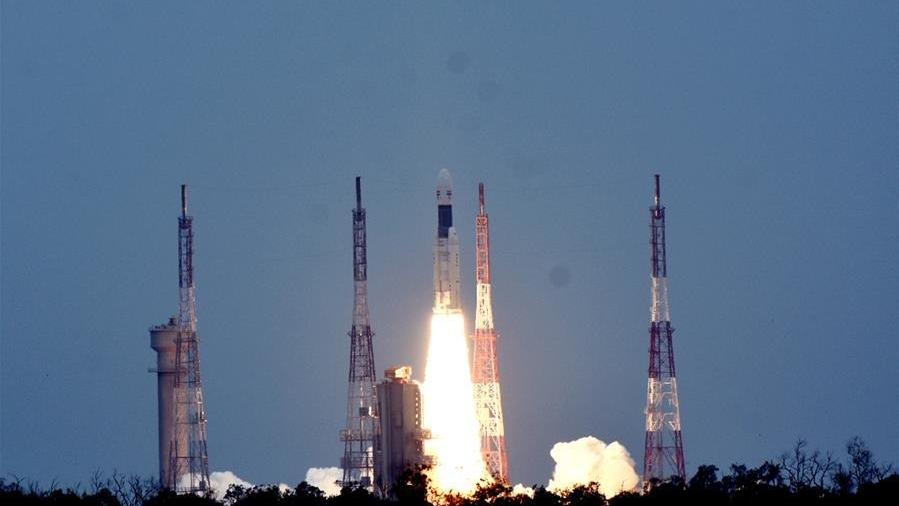 The rocket "GSLV-Mk-III" carrying Moon Mission-2, or Chandrayaan-2, lifts off from Satish Dhawan Space Center in Sriharikota, India, July 22, 2019. (PHOTO / XINHUA)
The rocket "GSLV-Mk-III" carrying Moon Mission-2, or Chandrayaan-2, lifts off from Satish Dhawan Space Center in Sriharikota, India, July 22, 2019. (PHOTO / XINHUA)
NEW DELHI - India's third moon mission Chandrayaan-3 has successfully undergone a key test that ensures functionality of the satellite subsystems in the space environment and their compatibility with the expected electromagnetic levels, officials said Monday.
The Indian Space Research Organisation (ISRO) described the test as a major milestone in the realization of the satellites.
India plans to launch Chandrayaan-3 in June
ALSO READ: India's 3rd lunar mission may spill over to 2021
According to the ISRO, Chandrayaan-3 lander successfully underwent the test known as Electro-Magnetic Interference/Electro-Magnetic Compatibility (EMI-EMC) during Jan 31-Feb 2 at U R Rao Satellite Centre, Bengaluru.
India plans to launch Chandrayaan-3 in June.
In 2021, India's federal junior minister for the department of space Jitendra Singh said the realization progress of Chandrayaan-3 was hampered due to the COVID-19 pandemic.
Chandrayaan-2 was launched on July 22, 2019 from Sriharikota in Andhra Pradesh by the ISRO. However, the mission lander lost contact shortly before the scheduled attempt to soft-land on the moon on Sept 7, 2019.
ALSO READ: Air India seals record order for almost 500 Airbus, Boeing jets
Later on, the US National Aeronautics and Space Administration (NASA) said its satellite orbiting the moon found the debris of India's crashed moon lander Chandrayaan-2.



